 Sunday/Weekend
Sunday/Weekend
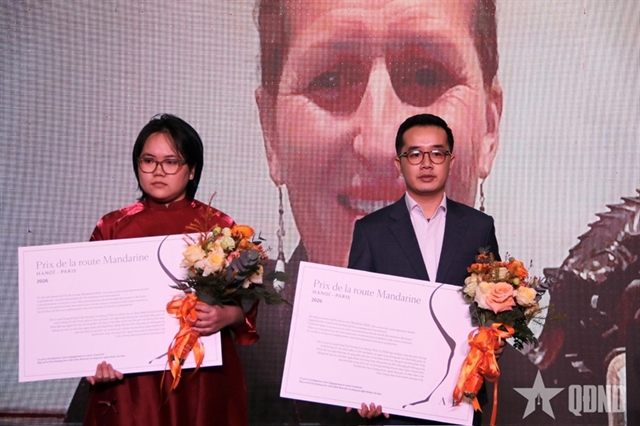
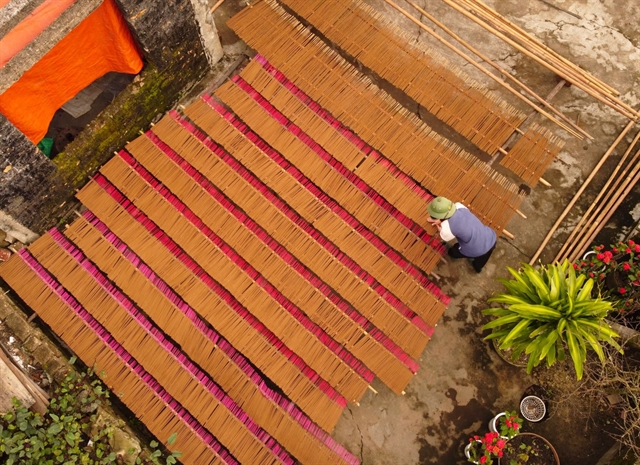 |
| Insence sticks are sun-dried on a yard. Quyết Thắng incense-making village has been around for approximately three centuries. Photo nguoiduatin.vn |
Quyết Thắng incense-making village, located in Thanh Trạch Commune, Bố Trạch District, Quảng Bình Province, is bustling with activity as it strives to meet demands for the upcoming Tết (Lunar New Year) holiday.
As we step into the village, the air is filled with the delightful fragrance that signifies the approaching festivities. In every yard and garden, incense sticks are being laid out to dry under the sun.
Burning incense is an integral part of Vietnamese tradition, observed during spiritual rituals, especially Tết (Lunar New Year festival).
Lighting incense sticks for ancestors is an essential ritual during Tết, symbolising respect and remembrance. Incense sticks have transcended their utility and have become a spiritual symbol in the lives of Vietnamese people. Alongside other traditional customs, the act of burning incense helps preserve and honour the cultural heritage of the Vietnamese.
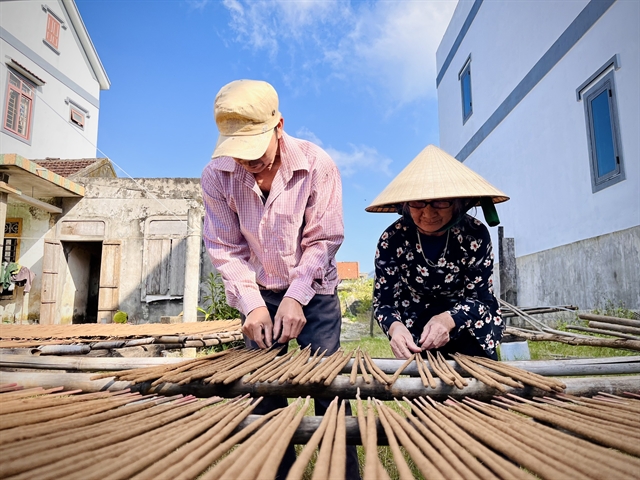 |
| Workers sun-dry incense sticks for 2 to 3 days. Photo nguoiduatin.vn |
Quyết Thắng Village's incense making has been helping to preserve this cultural tradition - a beauty cherished and passed down through generations of Vietnamese people.
The incense-making season in Quyết Thắng runs three months before Tết, when the villagers are at their busiest producing goods for the festive days.
"I started making incense sticks with my family when I was just 12 years old. Now, after more than 50 years in this profession, I can confidently say that everyone in this village, regardless of age or gender, knows how to do the job," says Lê Thị Duy, a 70-year-old villager.
Quyết Thắng Village consists of 510 households, nearly 300 of which engage in incense making. Each incense bouquet contains 100 sticks, priced between VNĐ150,000 and VNĐ170,000 according to quality.
Lưu Đức Huấn, chairman of Thanh Trạch Commune People's Committee [commune administration], highlights how the incense-making profession has generated employment opportunities and provided a stable income for rural residents.
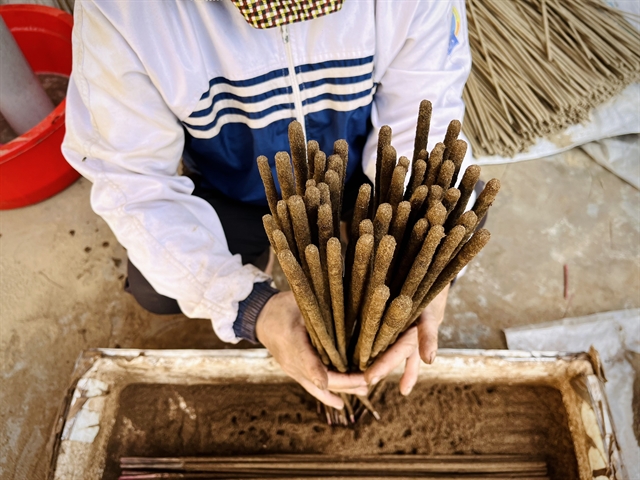 |
| Quyết Thắng incense is present in most cities and provinces in the country. Photo nguoiduatin.vn |
Phan Thị Hương's family is one of the prominent incense-making households in the village. She reveals that incense making has brought substantial income to her family. On average, her facility earns around VNĐ10-15 million per month during regular months, while during Tết, the earnings increase to approximately VNĐ30-40 million per month.
While it is uncertain exactly when the incense-stick making took root in the village, some of the elderly residents claim it has been around for approximately three centuries. Regardless of its origins, the craft has thrived and evolved.
Nguyễn Thị Tầm, a 65-year-old woman, says: "The craft village has endured for generations. Our incense sticks are handmade, using entirely natural ingredients with no toxic substances. Its unique aroma has made them very popular among consumers."
Originally, the locals used fragrant leaves sourced from the mountains to make incense. However, around 1968, they discovered a plant with a pleasant scent that could alleviate headaches, reduce stress, and repel mosquitoes. Combining this plant with other aromatic leaves, they created the distinctive incense that is still produced in the village today.
Nguyễn Thị Cốc, who has dedicated over 60 years to the craft, emphasizes the need for meticulousness at every stage of production to ensure the creation of high-quality products with a unique aroma.
To ensure the durability of the incense sticks, young bamboo stems are used, and submerged in water for some time. Once the fragrant leaves are dried and ground, cassava flour is used as a binder. Then the bamboo sticks are covered with a paste of mixed powder of fragrant wood, aromatic leaves and sawdust.
The final step involves sun-drying the incense sticks for 2 to 3 days. All work steps in incense stick production are carried out by hand. A well-made incense stick, meeting the required standards, ignites easily and releases a fragrant smell.
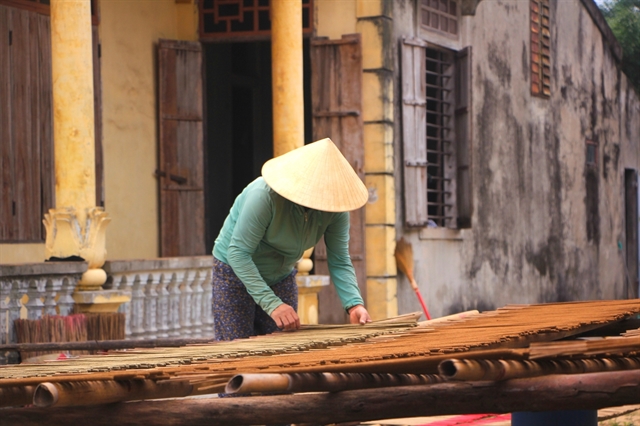 |
| Although the profession of making incense is difficult, it brings a good source of income for people during Tết. Photo nguoiduatin.vn |
Quyết Thắng incense is currently not only prevalent in markets in Quảng Bình Province but also reaches numerous provinces and cities across the country, including Hà Nội, Thanh Hóa, and HCM City.
Quyết Thắng incense village has established itself as a renowned brand over the decades. In 2015, it was officially recognised as a Traditional Craft Village by the People's Committee of Quảng Bình. VNS




